Print Picks: The Artist’s Complete Guide to Facial Expression
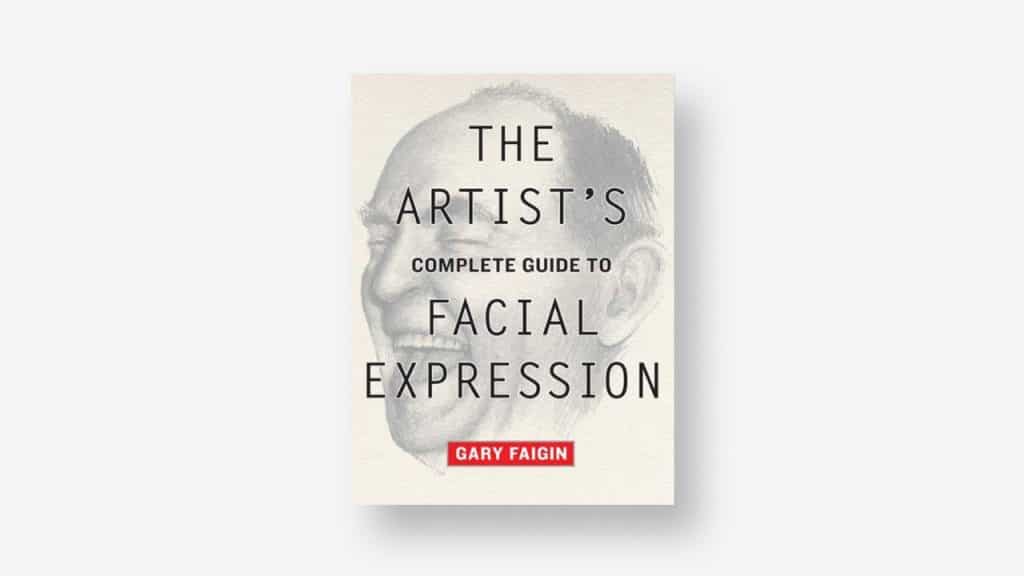
How do you first learn to draw? In our Print Picks series, we recommend some effective learning resources for studying drawing.
For the artist, the human body presents one of the most visually complex puzzles to be solved. Its tangled mass of interlocking forms and volumes can be difficult to make sense of, let alone depict in a convincing way on the page or canvas.
Within the challenge that is the human figure, perhaps the highest degree of difficulty is found in depicting facial expressions. The face and the series of muscles and bones it’s composed of are used in concert to send extremely nuanced signals of non-verbal communication. Our understanding of these signals is hardwired into our brains—we pick up on their meaning subconsciously, with their various degrees of nuance reflecting different states of mind and registering as different emotions in the viewer.
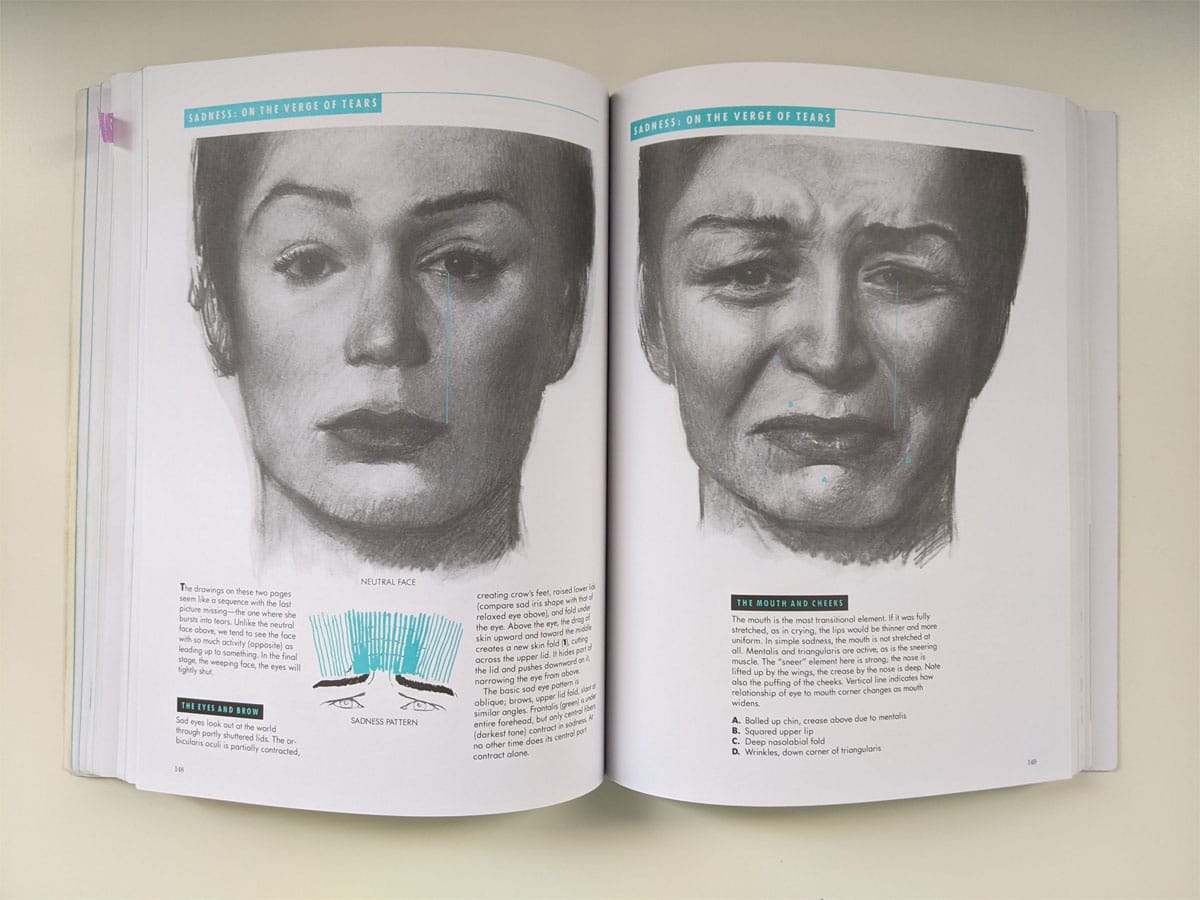
The subconscious nature of this process, both in expression and reception, is what makes depicting facial expressions so difficult when it comes time to recreate them on paper. The process is so intuitive that our conscious minds have difficulty tapping into this knowledge that is so deeply ingrained in our beings.
To add to this difficulty, this intuitive sense for facial expressions makes it painfully obvious to viewers when something is wrong with our drawings. Though we may have trouble pinpointing the exact source for this feeling of unease, its effects are certainly felt.
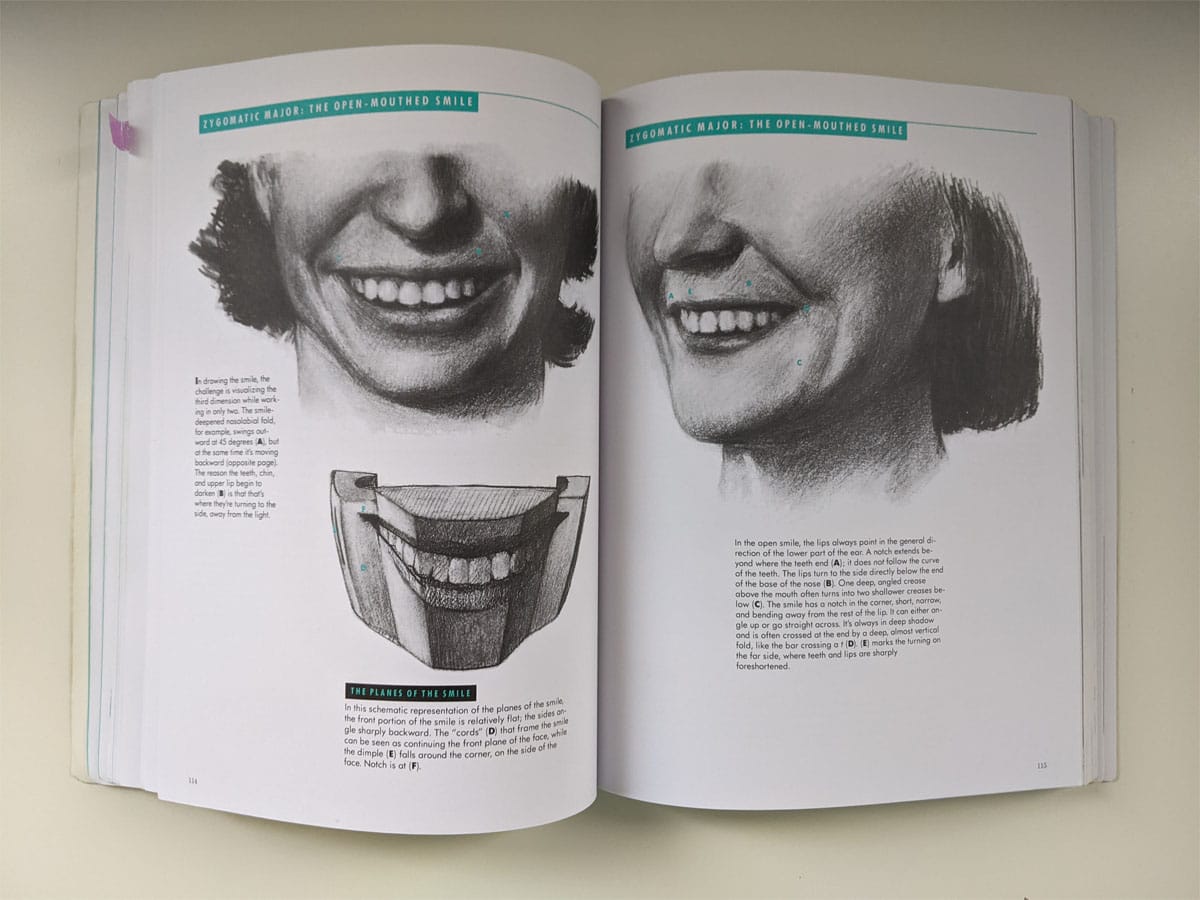
While there are plenty of resources available to artists that explore the anatomy of the human figure in excruciating detail, there are few that delve into its use and expression in quite as detailed of a fashion. The Artist’s Complete Guide to Facial Expression by Gary Faigin is one such exception.
Faigin demystifies the nuances of the face and its mechanisms in a systematic fashion. The book begins by pulling back the curtains to show the structure of the head. By first understanding its construction, observing why facial muscles move the way they do in later sections becomes clear and logical. This foundation aids in understanding not only the mechanics of the superficial muscles of the face, but also the proportions of the features in relation to one another and to the skull as a whole.
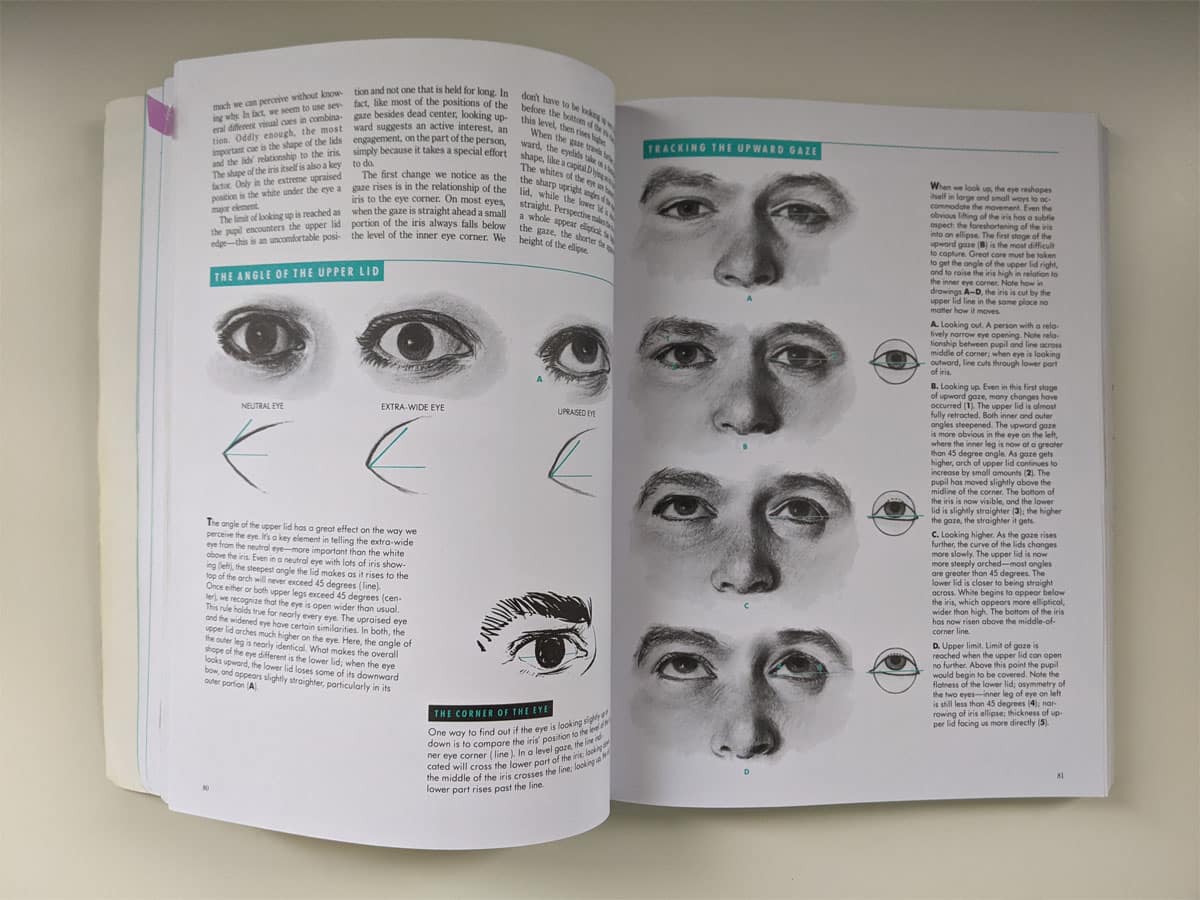
With the groundwork laid, next comes the muscles. Because this book is meant to serve as a practical guide for artists, the approach taken here is from the surface. The focus is placed upon how the various movements of the facial muscles displace the fat and skin of the face. It’s in these interactions and the resulting displacement of skin that expression lives.
Great detail is paid in this section to specific interactions, like how the creases of the forehead form when we raise our eyebrows or how smiles push the fat of our cheeks upward, in turn moving the lower eyelids into a bit of a squint. It’s through these interactions that readers are exposed to the building blocks of expression. Armed with this knowledge, they can be mixed and matched to convey the full spectrum of emotion the face is capable of communicating.
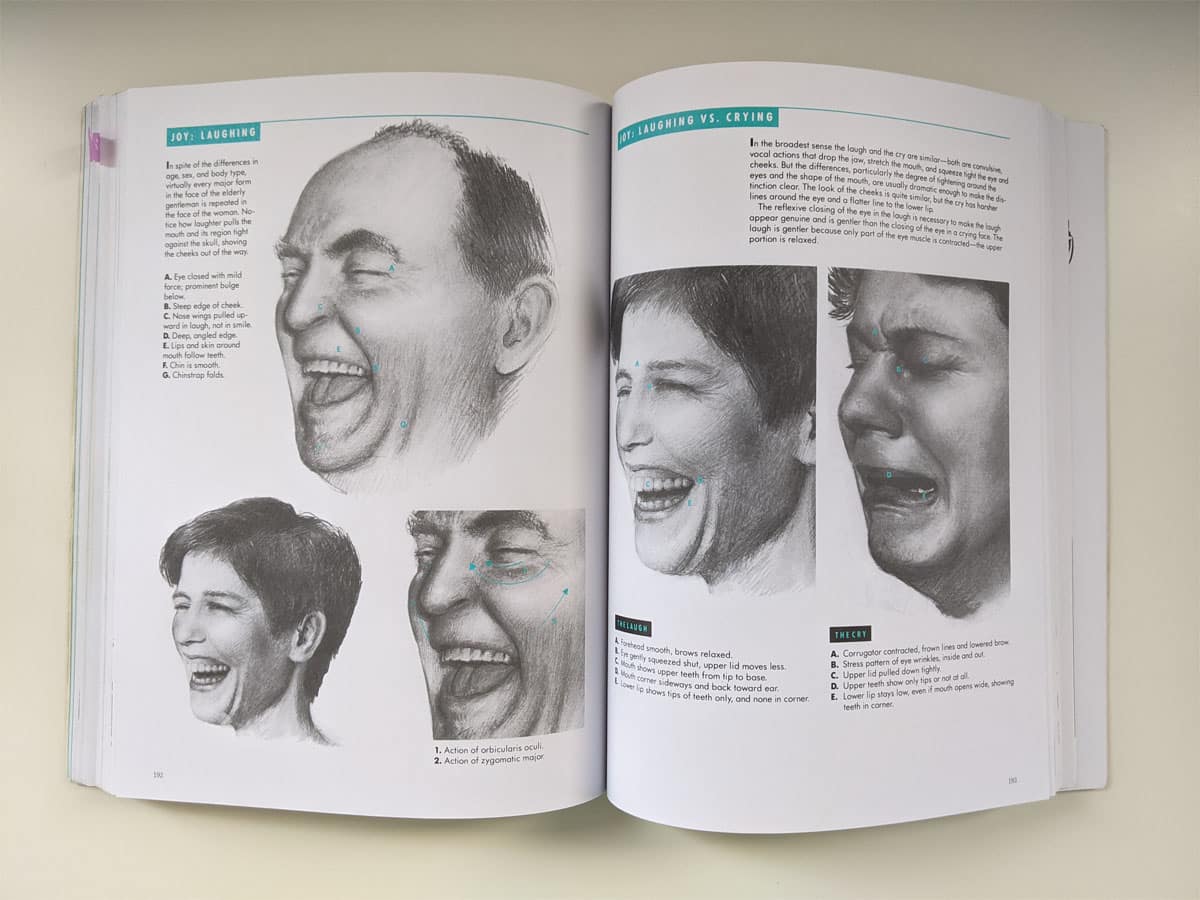
The true benefit of this book is in the simplicity of its approach. Faigin dispels any notions of complexity by demonstrating the simple truth of the face, that everything comes down to just the mouth and the eyes. By focusing your efforts here and understanding the ways in which small changes combine to communicate different emotions, a wide number of expressions are within reach. A final section in the back sums up the key features of common expressions and serves as a handy reference for future use.
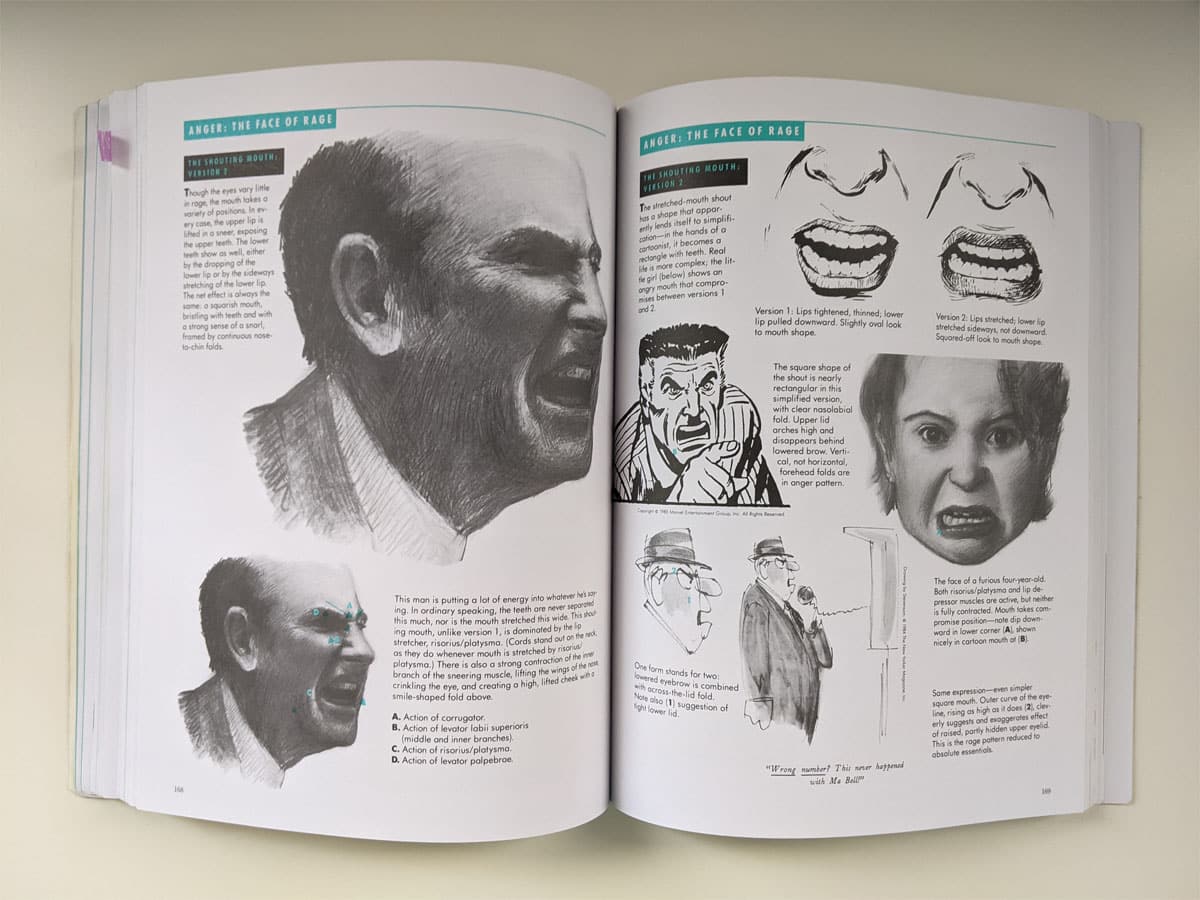
For anyone looking to understand the inner workings of the face and crack the code to communicating emotion, The Artist’s Complete Guide to Facial Expression is a great place to start.

Taylor is a concept artist, graphic designer, illustrator, and Design Lead at Weirdsleep, a channel for visual identity and social media content. Read more articles by Taylor.
RELATED ARTICLES:
SESSIONS NEWS:
ENROLL IN AN ONLINE PROGRAM AT SESSIONS COLLEGE:




